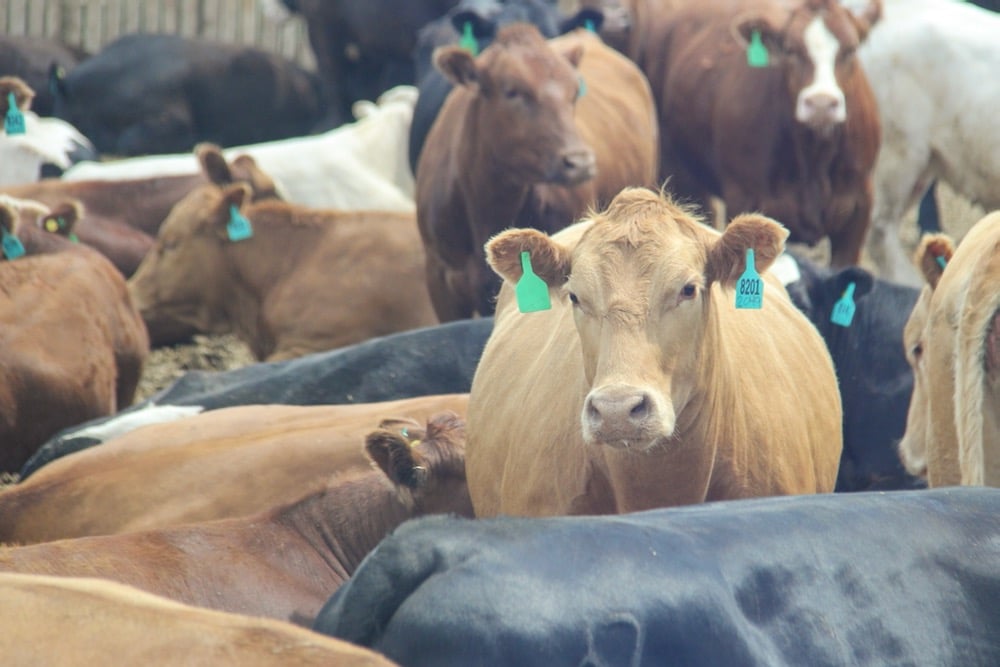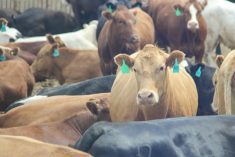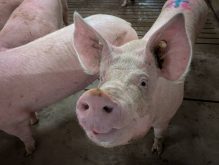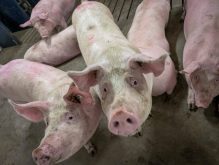The number of cattle placed in U.S. feedlots rose unexpectedly last month, government data showed Friday, which analysts said set the stage for a larger-than-expected beef supply this winter.
Placements, which came in about three per cent more than the average trade estimate, helped to lift cattle supply in feedlots by five per cent from a year ago — the 17th straight month of increases.
A drought in southwest that dried up pastures, a drop in corn prices, and higher fed cattle prices combined to put more cattle in feedlots in September, analysts said.
Read Also

U.S. livestock: Chicago cattle futures mixed ahead of Thanksgiving holiday
Chicago | Reuters – Chicago Mercantile Exchange’s live cattle futures were mixed on Tuesday, with nearby contracts extending the previous…
Despite that larger supply, analysts doubt there will be bargains on beef at grocery stores. Higher feed costs and a sharp drop in imported beef have pushed supermarket beef prices to record highs and analysts expect even higher prices next year as the U.S. cattle herd dwindles.
Earlier this week, the U.S. Department of Agriculture reported the average retail beef price in September was a record $4.91 per pound (all figures US$). USDA also projects 2012 beef production at 25.135 billion lbs., down from 2011’s 26.42 billion lbs.
A drought in the southern Plains withered pastures had forced young into feedlots. While that movement off of pastures has increased current feedlot cattle supplies, analysts claim the pool of feeder cattle is shrinking, which will mean fewer cattle next year.
“Slightly bearish”
The U.S. Department of Agriculture reported September placements at 100 per cent of a year ago, but the actual number was up slightly at 2.469 million head versus 2.463 million a year ago. Analysts, on average, expected 2.39 million head, or 97.1 per cent.
In August, placements were down one per cent from a year ago, which snapped a consistent pattern of increases the previous several months.
Analysts said placements usually are at the largest during the fall quarter when calves come off summer grazing programs and head directly to feedlots.
The USDA reported the Oct. 1 feedlot supply at 105 per cent of a year ago, or 11.312 million head. Analysts on average expected 104 per cent.
USDA put cattle marketings last month at 101 per cent of a year ago, or 1.813 million head, while analysts expected 100.8 per cent.
Ron Plain, livestock economist at the University of Missouri, characterized USDA’s unexpected placement result as “slightly bearish” but “not a huge miss.”
The government’s monthly cattle surveys are based on feedlots of 1,000 head or more, and some of the placement increase may be offset somewhat by fewer cattle being fed by smaller farmer feeders, Plain said.
— Additional reporting for Reuters by Meredith Davis and Michael Hirtzer















